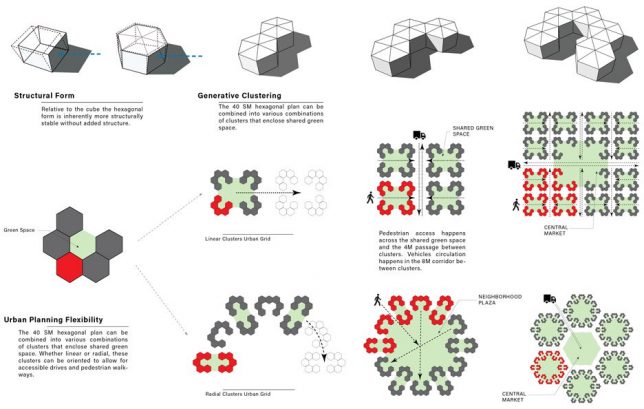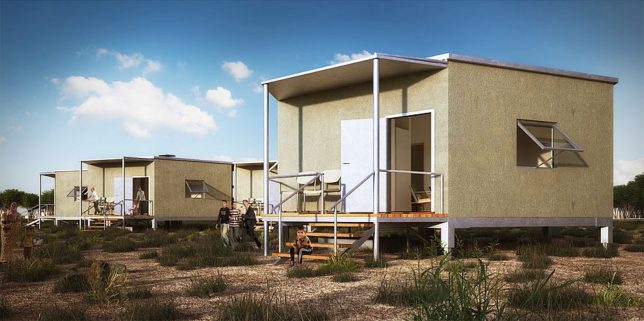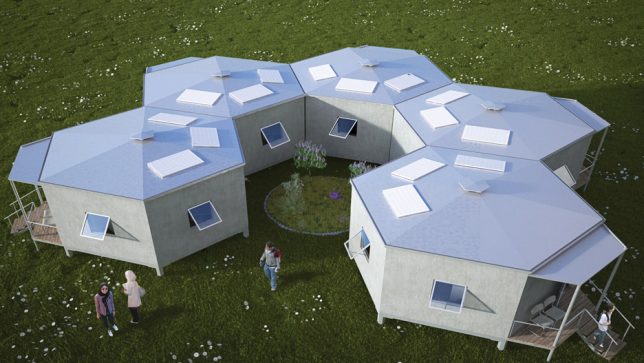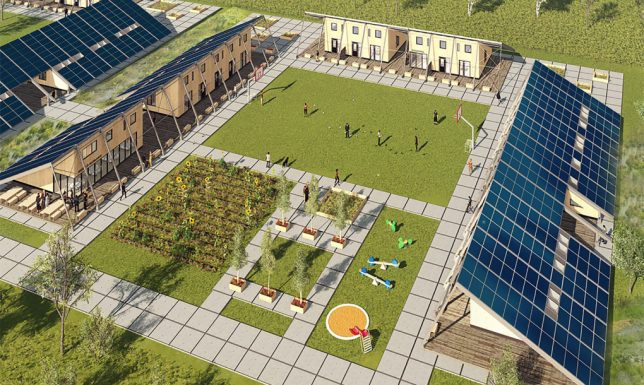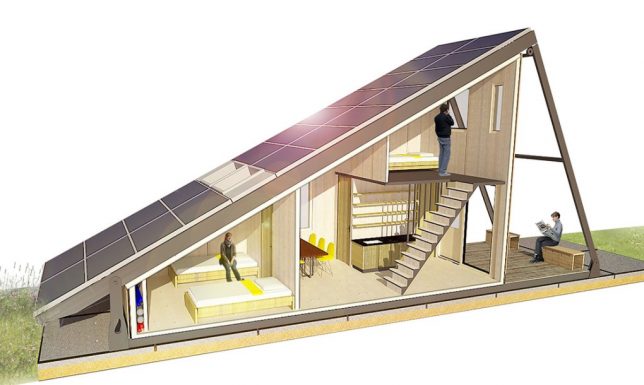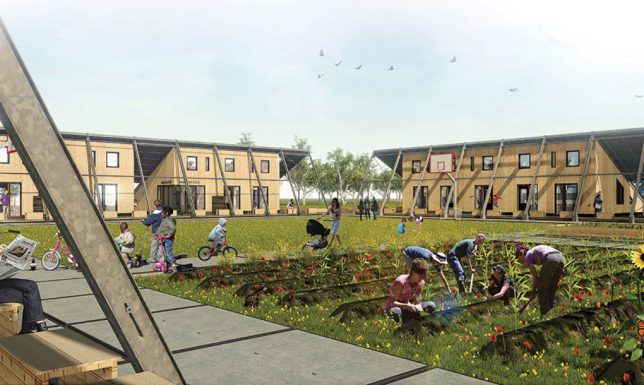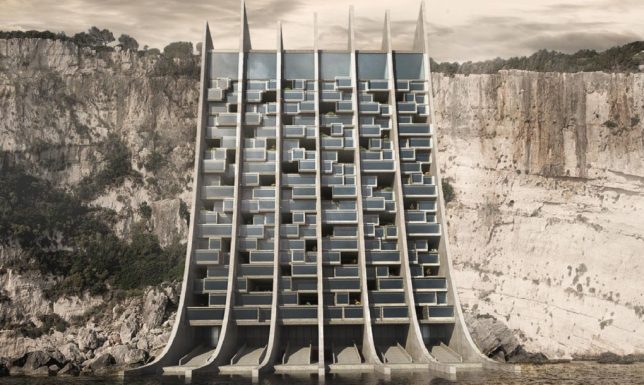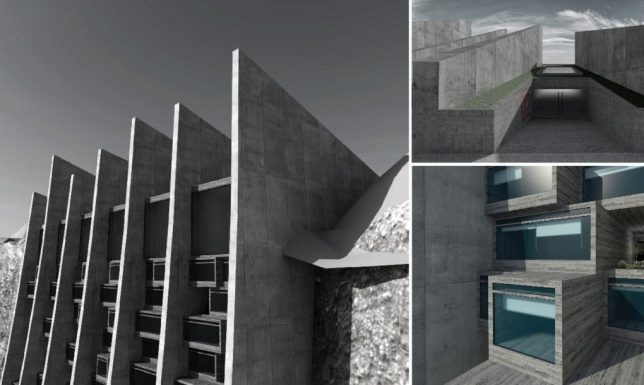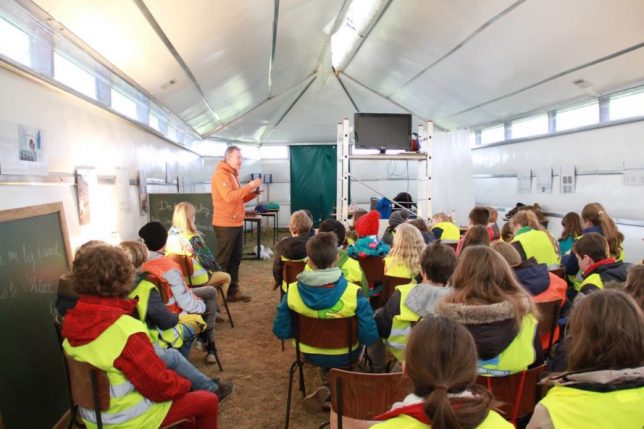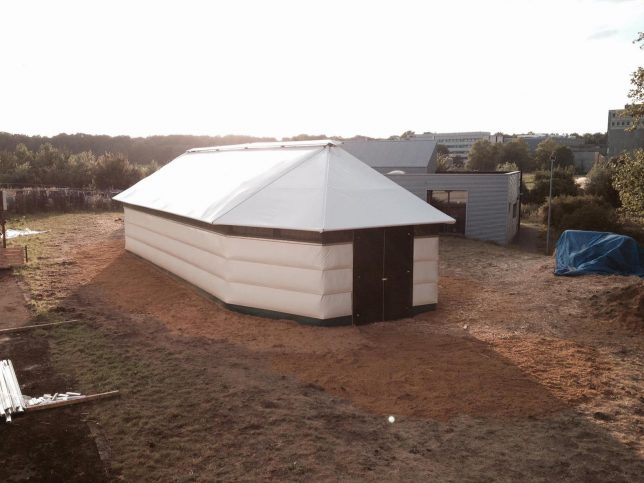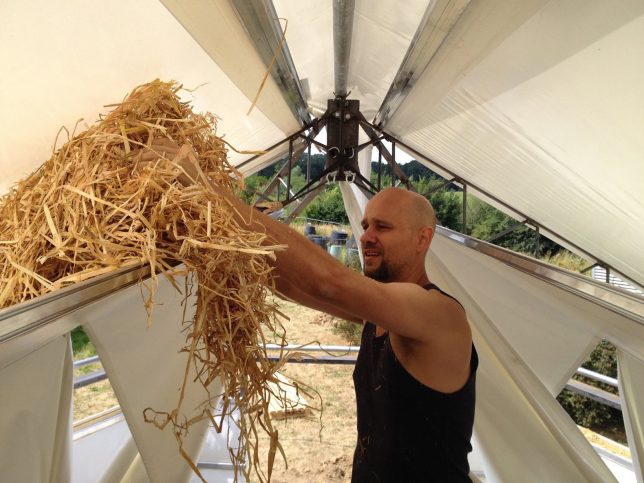Hexagonal Modular Shelters by Architects for Society
Flat-packed, low cost and rapidly deployable, the Hex House by Architects for Society is a 431-square-foot unit made mostly of Structural Insulated Panels (SIPs) that can be scaled up into larger units or entire communities and combined with courtyards, gardens and pedestrian paths. They’re designed to be occupied for 15 to 20 years, which is considerably longer than many refugee housing designs. Each one contains two bedrooms, a kitchen, a bathroom, a living rom and a porch.
Solar Cabin by Bureau Zondag and dNArchitectuur
Submitted to Home Away From Home, a design competition inviting innovative proposals for affordable asylum housing, ‘Solar Cabin’ by Bureau Zondag and dNArchitectuur is a prefab modular cabin made of gypsum and western red cedar with a rooftop solar array covering the entire sloped roof. The taller end of the wedge-shaped cabin can be aligned to face inward toward a central courtyard along with additional units to create a community. The design also includes rainwater harvesting and blackwater filtering through a constructed wetland.
(SLICE) Refugee Hospitality Center for Greece
Greek designer Spiros Koulias proposes the ‘(SLICE) Refugee Hospitality Center’ as a large-scale welcome center for refugee entry points and passages in Europe, such as the coastal cliffs of Greece. It can be scaled up or down as needed, and this particular concept for Greece includes 22 floors that can accommodate 500-600 people. While it’s a bit intimidating in its scale and the relative harshness of its design, the center creates a way of greeting refugees and starting the transitional process of finding them more permanent housing.
Modular Maggie Shelter by DMOA
Another semi-temporary, modular, low-cost shelter, the Maggie also lasts roughly five times longer than typical refugee camps – up to fifteen years. Designed by Belgium-based firm DMOA, the Maggie looks like a tent on the outside, but it features hollow walls that can be well-insulated with local materials like sand or straw. The basic module can house up to 60 people and can be erected by a team of five.
